

Woolf's jealousy of Mansfield's mastery. Footnotes and Endnotes. In the MHRA system, references to sources used in your work are set out in full in notes, either at the bottom of each page (footnotes) or at the end of the piece of work (endnotes).
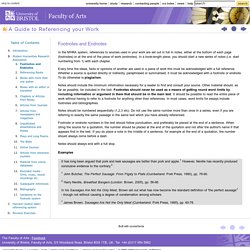
In a book-length piece, you should start a new series of notes (i.e. start numbering from 1) with each chapter. Every time the ideas, facts or opinions of another are used in a piece of work this must be acknowledged with a full reference. Whether a source is quoted directly or indirectly, paraphrased or summarised, it must be acknowledged with a footnote or endnote.
To do otherwise is plagiarism. Notes should include the minimum information necessary for a reader to find and consult your source. Notes should be numbered sequentially (1,2,3 etc).
An Error Occurred Setting Your User Cookie. 8. The Mark on the Wall. Woolf, Virginia. 1921. Monday or Tuesday. Property for sale in Nantymoel - Houses for sale in Nantymoel. 'The short story was once the condensed novel; it needed a complex subject and depended for merit on the skill with which condensation had been effected.'
Uncommon Reading – Eudora Welty on Virginia Woolf on Hemingway. The manuscript book in which Woolf wrote “Mrs.
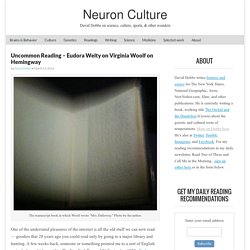
Dalloway.” Photo by the author. One of the underrated pleasures of the internet is all the old stuff we can now read — goodies that 20 years ago you could read only by going to a major library and hunting. A few weeks back, someone or something pointed me to a sort of English major’s dream hiding within The New York Times of 21 September 1958: Eudora Welty reviewing Virginia Woolf reviewing other books. We get to see one highly original and lively mind peeking into the workings of another as that other peers into yet others.
Of course, an editor who sent out a new book called “Men Without Women” to Virginia Woolf knew what he was doing. The International Virginia Woolf Society. Step 1: Who are you? - Log in - myBarclays. Scholes on Hemingway, Conversation 11.28.95. MUD Log with James Phelan / Phillip Sipiora. Introduction: Fiction, Criticism, and the Ideological Mirror. 1The aim of this Hemingway special issue is not to represent the largest possible range of commentary on Hemingway’s short stories, but to look closely at their rich texture, considering them as coherent wholes and autonomous units that activate their own symbolical potentialities, and liberate under the careful gaze of the reader their poetic energies and ever surprising force of connotation.
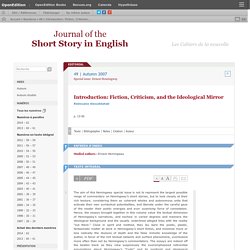
Hence, the essays brought together in this volume value the textual dimension of Hemingway’s narratives, and eschew in varied degrees and manners the ideological background and the usually underlined alleged links with the reality “out there.” Close in spirit and method, they lay bare the poetic, plastic, fantasmatic matter at work in Hemingway’s short fiction, and minimize more or less radically the illusions of depth and the false mimetic knowledge of the author, in favor of the rich textual network and surface phenomena, overlooked more often than not by Hemingway’s commentators. 6 Jackson J. Journal of the Short Story in English - Les Cahiers de la nouvelle. Step 1: Who are you? - Log in - myBarclays. Taylor & Francis Online. That Glimpse of Truth: The 100 Finest Short Stories Ever Written eBook: David Miller: Amazon.co.uk: Kindle Store.
Big Two-Hearted River Summary. The End of Something - AQA Anthology for GCSE. Introduction This guide is written for students and teachers who are preparing for GCSE exams in English literature.
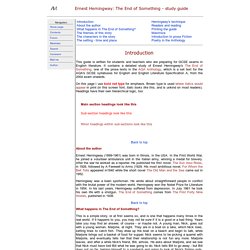
It contains a detailed study of Ernest Hemingway's The End of Something, one of the prose texts in the AQA Anthology, which is a set text for the AQA's GCSE syllabuses for English and English Literature Specification A, from the 2004 exam onwards. On this page I use bold red type for emphasis. Brown type is used where italics would appear in print (in this screen font, italic looks like this, and is unkind on most readers). Headings have their own hierarchical logic, too: Back to top. Cat in the Rain. Everybody knows cats hate water—so what do they do when it rains?
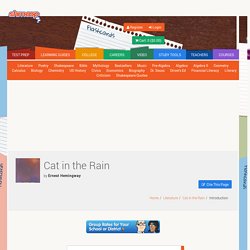
Apparently, they shiver and cower in the driest place they can find. Must be pretty lonely. They just can't get a break. Hemingway first published "Cat in the Rain" in 1925 as part of a short story collection, In Our Time. He wrote it while living in Paris with his first wife, Hadley, but the story's setting in the small Italian town was clearly influenced by his time in Italy as a Red Cross worker during World War I. This story is a prime example of the clean, lean writing style that he was developing in this period. It's set in a hotel on the Italian coast and takes place on a rainy day as an American couple hangs out in their hotel room. Come to think of it, not that much happens, does it?
If you have ever known what it's like to feel something deeply, to want something very much, but not be able to name it…then you should care about this story. What Lies Beneath: The Iceberg Theory of Writing. “If a writer of prose knows enough about what he is writing about he may omit things that he knows and the reader, if the writer is writing truly enough, will have a feeling of those things as strongly as though the writer had stated them.”
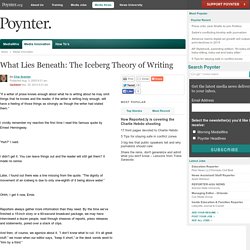
I vividly remember my reaction the first time I read this famous quote by Ernest Hemingway. “Huh?” I said. I didn’t get it. Iceberg Theory. The Iceberg Theory (also known as the "theory of omission") is the writing style of American writer Ernest Hemingway.
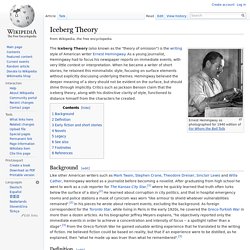
As a young journalist, Hemingway had to focus his newspaper reports on immediate events, with very little context or interpretation. When he became a writer of short stories, he retained this minimalistic style, focusing on surface elements without explicitly discussing underlying themes.